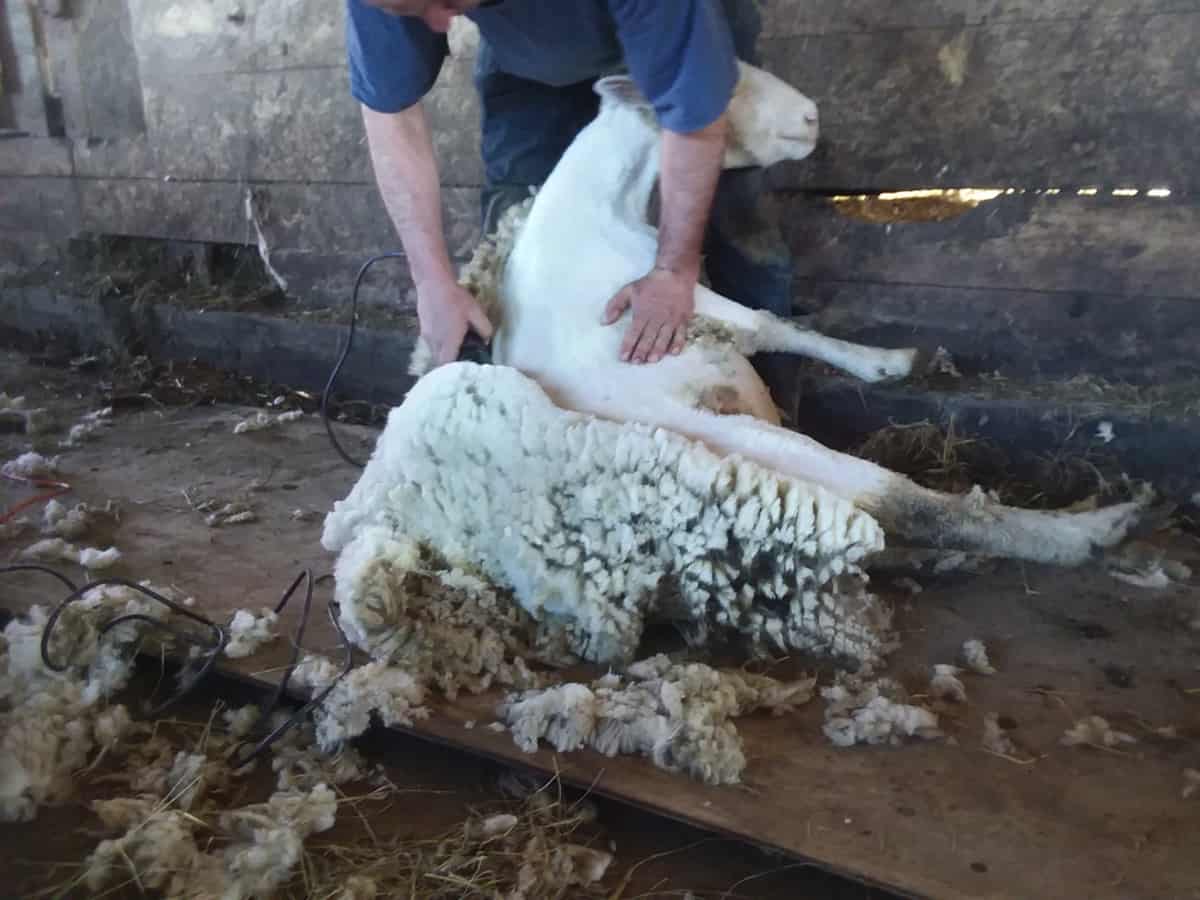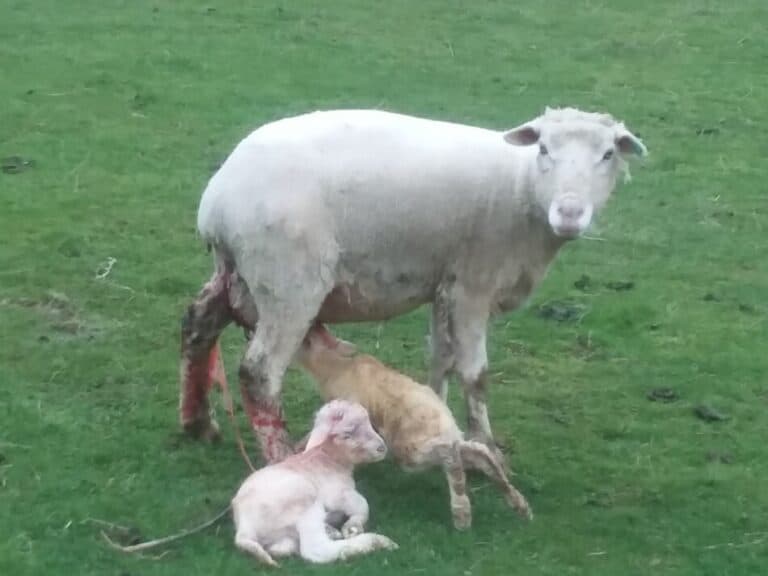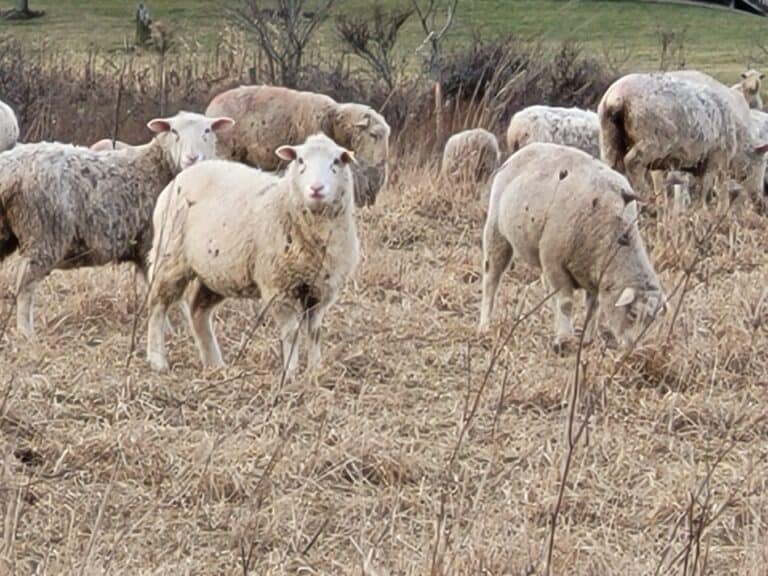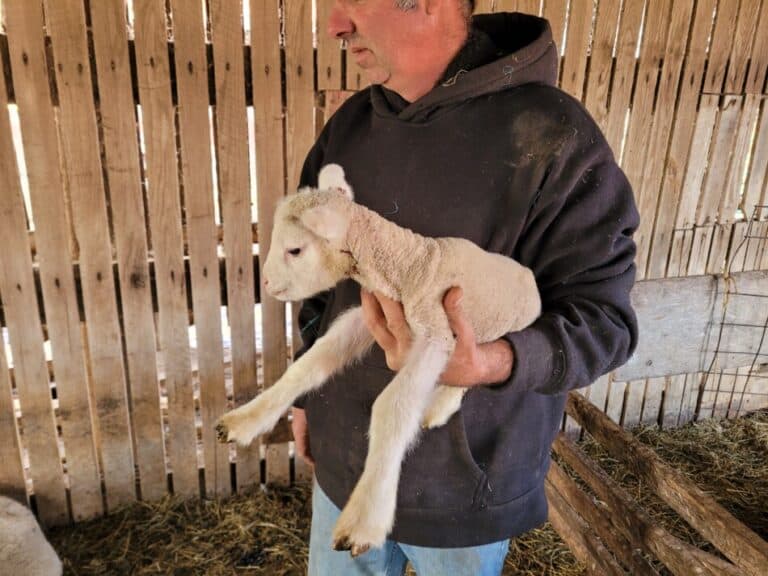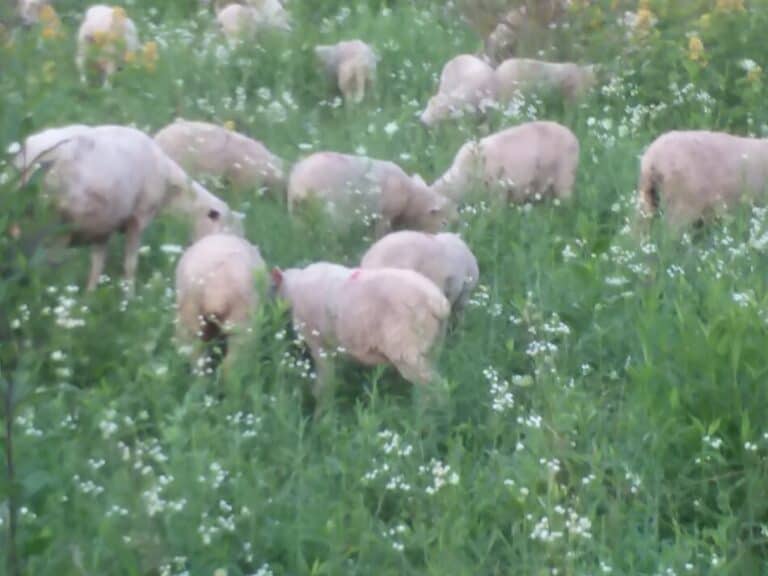Why Do Sheep Need Shearing? A Beginners Overview
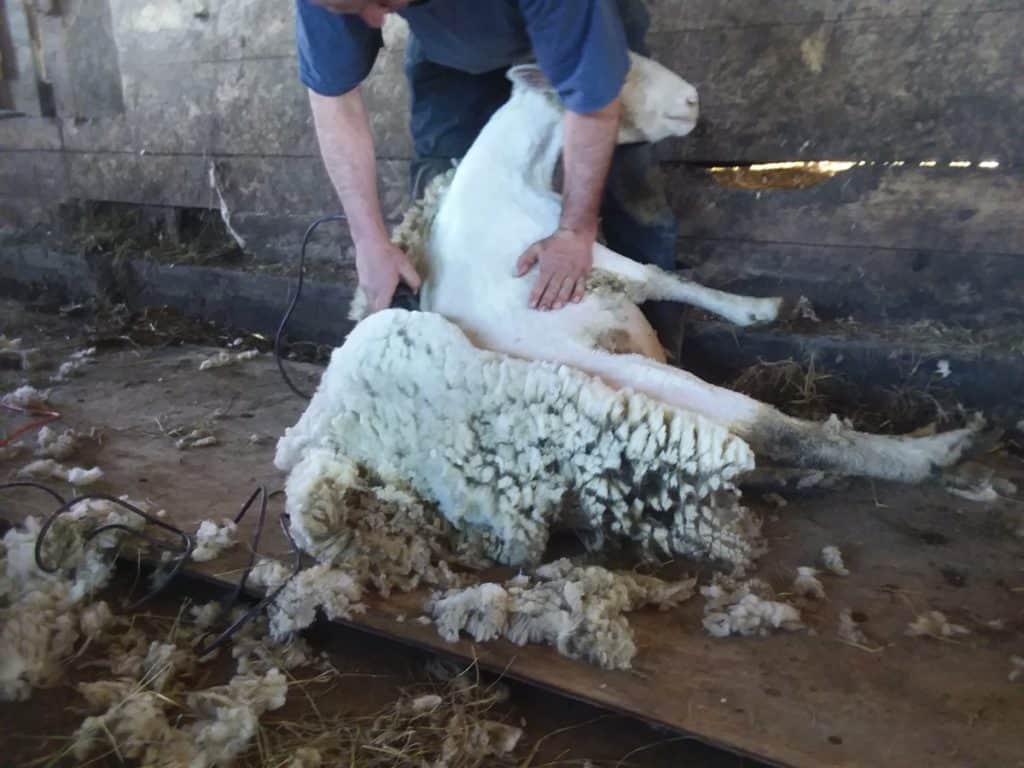
Wondering why sheep need shearing? Why can’t they just keep their wool all year and farmers and ranchers would have less work to do? Let’s look into it!
Sheep need shearing to remove wool that will not naturally shed. Shearing wool keeps the sheep more comfortable in the warm weather and helps the sheep stay clean throughout the rest of the year.
Spring shearing is crucial to the heath of your flock. Timely shearing sets up the ewes for a successful lambing season and gives you an up close inspection of the sheep one at a time.
When your sheep have all of their wool on it is hard to get a close look at them to make sure they are happy and healthy as possible.
Easiest Breeds Of Sheep To Raise will go over my best recommendations for sheep that are beginner friendly.
Is she keeping on weight or is she too fat? She might be closer to lambing than you thought so you can put her in the soon to lamb pen so you can keep a close eye on her.
Rams also benefit from individual care and the close inspection you can make now that their wool is off since for most of the year the wool obscures your view.
With the wool removed you can easily see his body condition (how fat or thin he is). How does he look?
If he’s not performing as well as you would like you can start your search for a replacement ram with plenty of time to consider your options before breeding season starts.
11 Breeds Of Sheep With Black Faces is an interesting look at some sheep with a bit of color, since ours are all white but one!
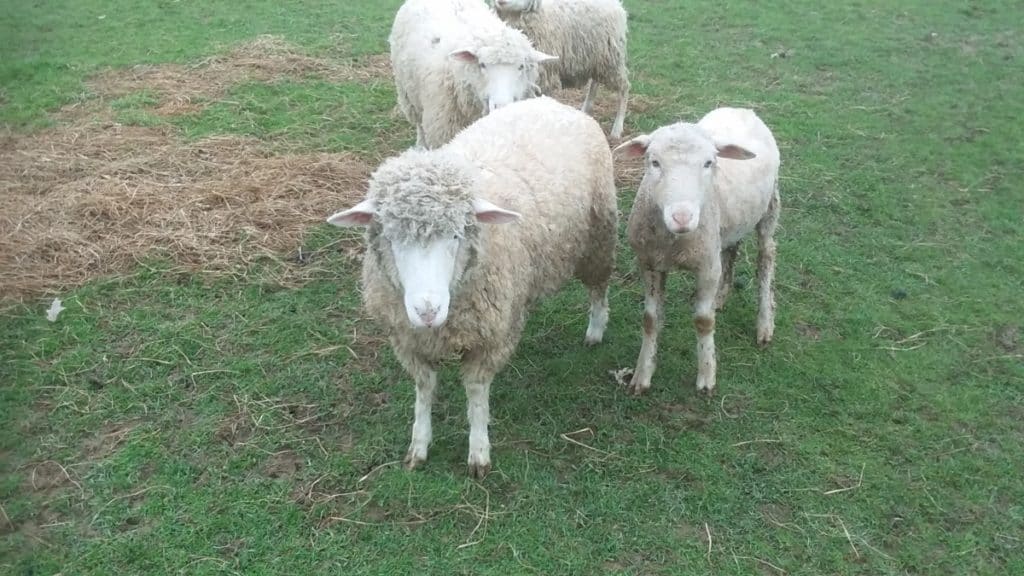
Take a look at the picture above. Those front two ewe lambs are about the same age and weight. It sure doesn’t look like it in that picture!
It’s crazy the difference that shearing makes in the appearance of a sheep.
Determine when to shear based on wool growth and weather
The wool (called the fleece) of a sheep needs shearing at least once a year. For most sheep this is the case.
Normally shearing is scheduled at a month or so before spring lambing.
Spring is the traditional choice for shearing to give the lambs the best chance of successfully finding the udder and nursing as soon after birth as possible.
Breeds with longer fleeces of 6-12 inches need shearing more often to keep the fleece in top condition. Both spring and fall shearing is needed for these guys and gals.
When To Shear Sheep goes over some of the things a flock owner needs to take into consideration when scheduling the shearer.
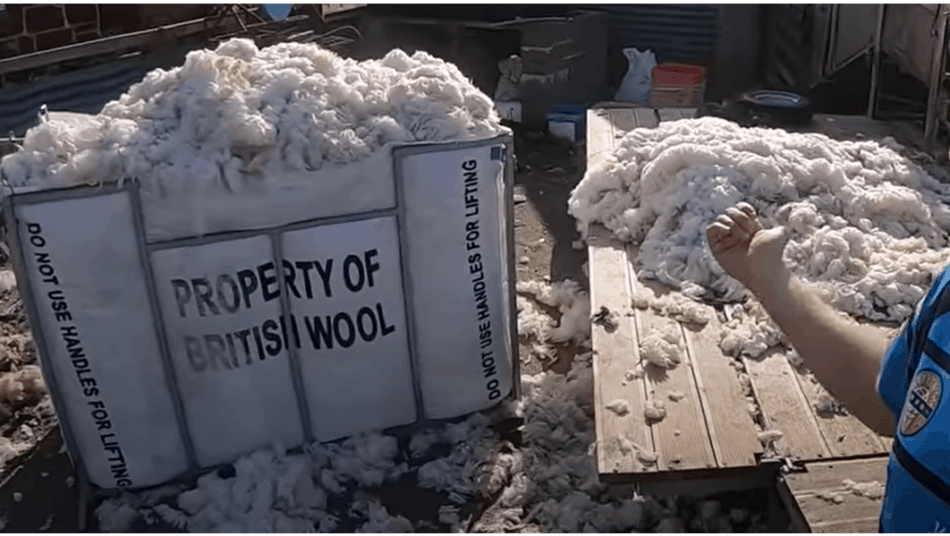
Long wool breeds such as Lincoln or Cotswold require multiple shearings per year (usually two) to keep the fleece from matting together.
The tangled fleece will not overly bother the sheep but it will make a big difference to the farmer.
Tangles and matting will make the fleece unusable for the handspinners and crafters that want to purchase these fleeces.
Specialty wool is in high demand and commands a good price, but only if the fleece is in top condition.
Not all breeds of sheep need shearing
Not all breeds need shearing because not all breeds of sheep have wool!
Sheep without wool to shear are called hair sheep. Common examples of hair sheep breeds are Katahdins and Dorpers.
At first glance hair sheep might be mistaken for goats especially if you thought all sheep have a woolly exterior.
Hair sheep do grow a more wool like coat in the winter to keep warm. In the spring they shed this woolly insulation to spend the summer with a hair coat.
Sheep are shorn with clippers
Most people shear with clippers. These are the same type of clippers as a barber would use but much bigger and more durable.
How To Set Up Clippers goes over the specifics of setting up your comb and cutter to shear.
The clippers have two sets of blades. The bottom set is called the comb.
The comb is a stationary blade that glides through the wool to hold the wool upright so it can be cut by the top blade.
The top blade is called the cutter. The cutter is the only blade on clipper that moves.
The cutter travels quickly back and forth over the comb. This is the movement that actually cuts the fibers of the fleece.
The blades on both the top and bottom need replaced when they start to dull. Blades can be sharpened and used repeatedly.
The number of sheep you can shear per set of blades varies widely depending upon if the fleece is clean and dry or wet and/or dirty.
Some types of wool also seem to dull blades faster than others.
Shearing does not hurt the sheep!
Shearing does not hurt the sheep! Most sheep don’t like being held -just like most of our barn cats!
The first picture in this article is my husband shearing one of our sheep. We make our living off of these animals.
Healthy, happy animals have better lives and give us better results. It just doesn’t make sense for us to put a lot of time and effort into hurting our flock.
The one most likely to get hurt during shearing is actually the person. Sheep can be feisty. Remember you only have one hand free to hold the sheep. The other hand has the clippers!
Shearing costs $5.00 per head
Most shearers will charge around $5 each to shear and s/he takes the wool. Keep in mind if you only have a few sheep the cost will be higher as s/he will probably have a minimum charge per job.
The minimum charge per flock is reasonable because coming to you means not going to other possibly bigger flocks today.
You can keep your wool if you would like, all of it or just a few specially chosen fleeces. Be sure to tell your shearer ahead of time.
Keeping the wool will raise the price per head charged to you because the shearer being able to sell the wool is figured into your cost.
Ask other flock owners in your area. What are they paying and who does the best job?
Here’s a look at a shearing contractor site in Australia, it gives you a look at the business side of shearing.
You can shear your own sheep!
Heck, yes! You sure can shear your own sheep! Everyone who is shearing now had to learn and start at the beginning just like you.
Shearing your own sheep is challenging. Once you get the hang of positioning the sheep and get comfortable with the clippers you will get faster.
Like everything else this is a skill that takes time and practice to master.
When you decide to give shearing a try yourself the supplies shouldn’t be too hard to find.
Many livestock supply stores will have clippers and blades on hand or they are easily ordered. There are also tons of detailed videos online to get you started off right.
Sheep 101: Shearing has an interesting overview of most aspects of shearing, if you are looking for more information.
Related Questions
How long does it take to shear a sheep?
Most people can with experience can shear a sheep in about 5 minutes. It depends upon skill level of the shearer and the condition and attitude of the sheep during shearing.
How much money is the wool worth?
Most sheep farmers would get 20-30 cents per pound of wool. Prices do change year to year but that is normal. Our wool this year averaged 31 cents per pound with a range of 7-77 cents per pound.
Unfortunately, this year 2020, our wool sold for $0.02 per pound, yikes!
If you are selling wool to handspinners or crafters I have seen as much as $75 a fleece for specific breeds or special colors.
How much does the wool from a sheep weigh?
Depending upon breed anywhere from 3-20 pounds per year.
